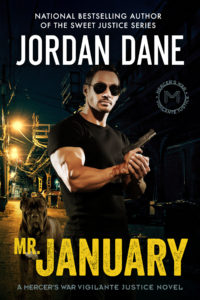This photo makes me want to go on vacation. Let’s take a ride with Crawford, our character in Palm Beach Nasty, a 1st Page Anonymous Submission. Read and enjoy. My feedback follows:
ONE
It turned out Crawford really missed the murder and mayhem up in New York. Which was weird, since the whole reason he’d gone south was to get away from it all.
At age thirty-six, with a bad case of acid reflux, chronic cynicism, and acute burnout, Charlie Crawford had packed up his Upper West Side apartment and headed down to the Sunshine State. He decided on the Keys, the plan being to take up surfing, give the Jimmy Buffett thing a shot. But after three long months of listening to stoned-out beach bums in lame Hawaiian shirts oohing and aahing pretty average sunsets and duding each other to death, Crawford was ready to move on.
So he’d reached out to a handful of Florida law enforcement agencies, and when the Palm Beach Police Department made him an offer, he grabbed it. But almost a year into the job, no one had come close to getting knifed, shot, garroted, or even banged up a little. Christ, what he’d give for a nice facedown stiff, a little rigor setting in. Crawford was drawing a bunch of nowhere cases, which could best be summed up by the one he was writing up now.
It was late afternoon on Halloween, and a call had come in about a possible trespass up on the north end. The north end of Palm Beach was really two places, depending on the exact location. Obscenely rich or doing just fine, thanks. Spectacular houses on the ocean and Intracoastal that started at ten million dollars and went up from there. Or fixer-uppers, on postage-stamp lots at around a million. Recently a Russian fertilizer billionaire had plunked down a shade under a hundred mill for Trump’s monumentally ugly, but colossally huge, ocean spec house.
But despite that, the real estate market had been hit hard when Wall Street collapsed three years before and was still wobbly. Somewhere between anemic and soft, desperately trying to claw its way back to pre crash levels. One of the top brokers in town was whining about having a lousy year—4.8 million in commissions as opposed to over 7 million in ’07. And real estate lawyers quietly grumbled about fewer closings, but even more about a troubling new phenomenon: clients hondling them on their fees. And pity the poor builders, who had traded down from tricked-up ninety-five-thousand-dollar Escalades to basic Ford 150s.
FEEDBACK
Overview – There is an ease to this writer’s voice that I liked. This intro is written in a deep POV that is close to first person. I almost wish it was full blown 1st, to give the character more room to breathe. This character has opinions about everything, which would work for the intimacy of 1st person if the author can tighten the narrative (without too much meandering). Because of the mental meanderings, the pace is significantly slower with a lack of focus for the action or world building.
A good thing to note is that this author can hear the character and is willing to channel him. That’s not an easy thing to get and execute. Kudos.
But how can this author retain the good parts of the character voice, yet not slow the pace? A big part of this resolution is how to introduce a key character by SHOWING rather than TELLING about him.
HOUSEKEEPING:
Where to Start? – The author started with a back story dump, sharing where Crawford had lived in NYC with a subsequent stay in the Keys, then on to police work in Palm Beach. These are all things that can come out later with patience. At the start, it’s too much misdirection without a point. That puts us down to paragraph 4 to search for a place to start–at the body or crime scene and any interesting lead up to that moment–but we get a lesson in real estate and the Wall Street crash. Bottom line, we need a better place to start that can showcase Crawford and his personality, through his actions and his cynical dialogue or banter with his colleagues.
Passive Voice – There were too many uses of ‘was’ and ‘had’ to indicate a past time period, or hint of backstory. ‘Was’ is used 8 times and ‘had’ is used 9 times in 400 words of this introduction. These are words I try to minimize and correct in an edit. It indicates this story should start with the present action and minimize the backstory.
Missing words typos – These are hard to catch. As authors, we are too familiar with our own work and miss words that should be there if we don’t read more carefully or read aloud. Last sentence in 2nd paragraph – “…oohing and aahing AT pretty average sunsets…” (‘At’ is left out.)
But how can this author retain the good parts of the character voice, yet not slow the pace? A big part of this resolution is how to introduce a character.
Key Ways to SHOW your Character rather than TELL On Him:
Try introducing your character like some films do, with big character stars like Capt Jack Sparrow in Pirates of the Caribbean. Johnny Depp doesn’t merely walk onto the scene and speak his first line, he makes a big intro to SHOW who he is. In mere seconds, we know him and who he’ll be. It takes practice to do this for an author of fiction. I call this “The Defining Scene.”
So imagine who Crawford is when he’s first introduced to this story. Since I like the author’s instincts on voice, I wanted to ask open ended questions for a rewrite of this intro. I didn’t want to influence the author by rewriting it myself. Think of it as a homework assignment, a short exercise.
1.) He’s a transplanted New Yorker with a side trip to the Keys. I can see his NY accent coming through. Are there remnants to his Keys stay? What does he wear in Palm Beach as a former New Yorker?
2.) Crawford is cynical and opinionated. How does this affect his co-workers, the other cops. Is he liked? Does he like them? Is he a loner?
3.) What hobbies does Crawford have? Are these apparent? Does he let other people know about them? What does he dream about? Is he saving for a beach house or a boat? Maybe he works more than one job to save up for something he doesn’t want to share with anyone else. Why did he choose the beach again? Does he miss NYC?
4.) He seems to thrive on crime scenes, being in his element. How does that manifest? Is he overly detailed in his approach or almost too relaxed? Does he communicate on the scene or keep to himself? Does he have a partner? If so, is his partner the same or opposite? Do they get along or not? How does that work for them?
To make Crawford memorable, the author gets a ‘first shot’ at a reader’s first impression. How would the author set the stage?
Below are some things to keep in mind.
- Devise this crime scene for Crawford to shine or standout. Is it particularly morbid? Has he seen cases like this before? Does he bring NYC bagels and coffee? How does he react versus how others do? Set the stage for Crawford.
- Give him something to do that will show the reader who he is. When others are turning away, he’s unusually attentive to details of the corpse. Does he have any idiosyncrasies at the scene, like how he treats the victim? Does he notice a stray cat in an alley with a possible clue when no one else does?
- Make this scene about Crawford and focus on him. Let the reader know how he ticks, his values, his likes and dislikes. Carry these things through the book to take the reader on a journey.
- Focus on Crawford’s character, more than plot, to give the reader a sense of him in this intro. If the author can devise a way to jump-start the plot (as in the murder scene), then you’ll get two birds with one stone.
- Build on the energy from the Defining Scene. The reader will make an investment into Crawford going forward.
DISCUSSION:
What feedback would you give this author, TKZers? Is the engaging voice enough to keep you turning the pages?
Mr. January Available NOW! $2.99 Ebook
Zoey Meager risks her life to search for her best friend Kaity in a burning warehouse, only to cross paths in the inferno with Mr January, a mysterious man with a large black dog, completely devoted to its master.


